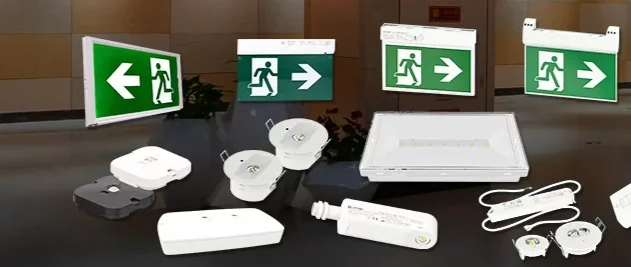We usually see various emergency escape lighting luminaries in the public. Here's a beginner's guide to emergency escape lighting luminaries, please collect!
What are emergency escape lighting fixtures

Emergency escape lighting is a type of lamps that can effectively illuminate and display evacuation passages when the normal lighting power supply fails, or can continue to illuminate and work uninterrupted. Widely used in public places and places where lighting cannot be interrupted. Emergency escape lighting is composed of light source, light source driver, rectifier, inverter, battery pack, sign lamp housing and other parts.
The role of emergency escape lighting luminaries
In densely populated places, such as hospitals, residential areas, shopping malls, office buildings and other areas, fire emergency escape lighting will be installed. Ensure the evacuation of personnel and the smooth progress of rescue operations. To put it simply, when the power is cut off, the fire emergency lighting can still work normally, and the lighting time is not less than 90 minutes.
Types of emergency escape lighting fixtures
There are many types of emergency escape lighting fixtures. In an emergency state, it is necessary to provide emergency lighting fixtures. Common fire emergency lighting fixtures include: emergency panel lights, emergency downlights, emergency ceiling lights, emergency three-proof lights, etc.
Installation of emergency lighting fixtures
The installation of emergency lighting shall meet the following requirements:
1. The emergency lighting can be installed by in-ceiling, ceiling and hoisting;
2. Emergency lighting should be installed on the ceiling;
3. When the conditions are limited, the emergency lighting can be installed on the side wall of the aisle, and meet the following requirements:
①The installation height should not be between 1m-2m from the ground;
②When installing on the side wall below 1m from the ground, ensure that the light shines below the horizontal line of the lamp.
4. Emergency lighting should not be installed on the ground.

